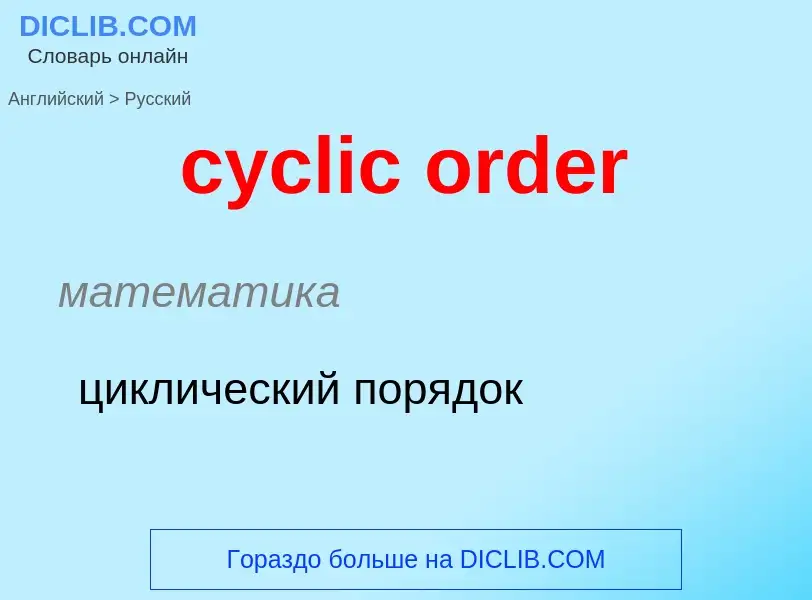Translation and analysis of words by ChatGPT artificial intelligence
On this page you can get a detailed analysis of a word or phrase, produced by the best artificial intelligence technology to date:
- how the word is used
- frequency of use
- it is used more often in oral or written speech
- word translation options
- usage examples (several phrases with translation)
- etymology
cyclic ordering - translation to russian
математика
циклический порядок
математика
цикличное упорядочение
Definition
Wikipedia
In mathematics, a cyclic order is a way to arrange a set of objects in a circle.[nb] Unlike most structures in order theory, a cyclic order is not modeled as a binary relation, such as "a < b". One does not say that east is "more clockwise" than west. Instead, a cyclic order is defined as a ternary relation [a, b, c], meaning "after a, one reaches b before c". For example, [June, October, February], but not [June, February, October], cf. picture. A ternary relation is called a cyclic order if it is cyclic, asymmetric, transitive, and connected. Dropping the "connected" requirement results in a partial cyclic order.
A set with a cyclic order is called a cyclically ordered set or simply a cycle.[nb] Some familiar cycles are discrete, having only a finite number of elements: there are seven days of the week, four cardinal directions, twelve notes in the chromatic scale, and three plays in rock-paper-scissors. In a finite cycle, each element has a "next element" and a "previous element". There are also cyclic orders with infinitely many elements, such as the oriented unit circle in the plane.
Cyclic orders are closely related to the more familiar linear orders, which arrange objects in a line. Any linear order can be bent into a circle, and any cyclic order can be cut at a point, resulting in a line. These operations, along with the related constructions of intervals and covering maps, mean that questions about cyclic orders can often be transformed into questions about linear orders. Cycles have more symmetries than linear orders, and they often naturally occur as residues of linear structures, as in the finite cyclic groups or the real projective line.

